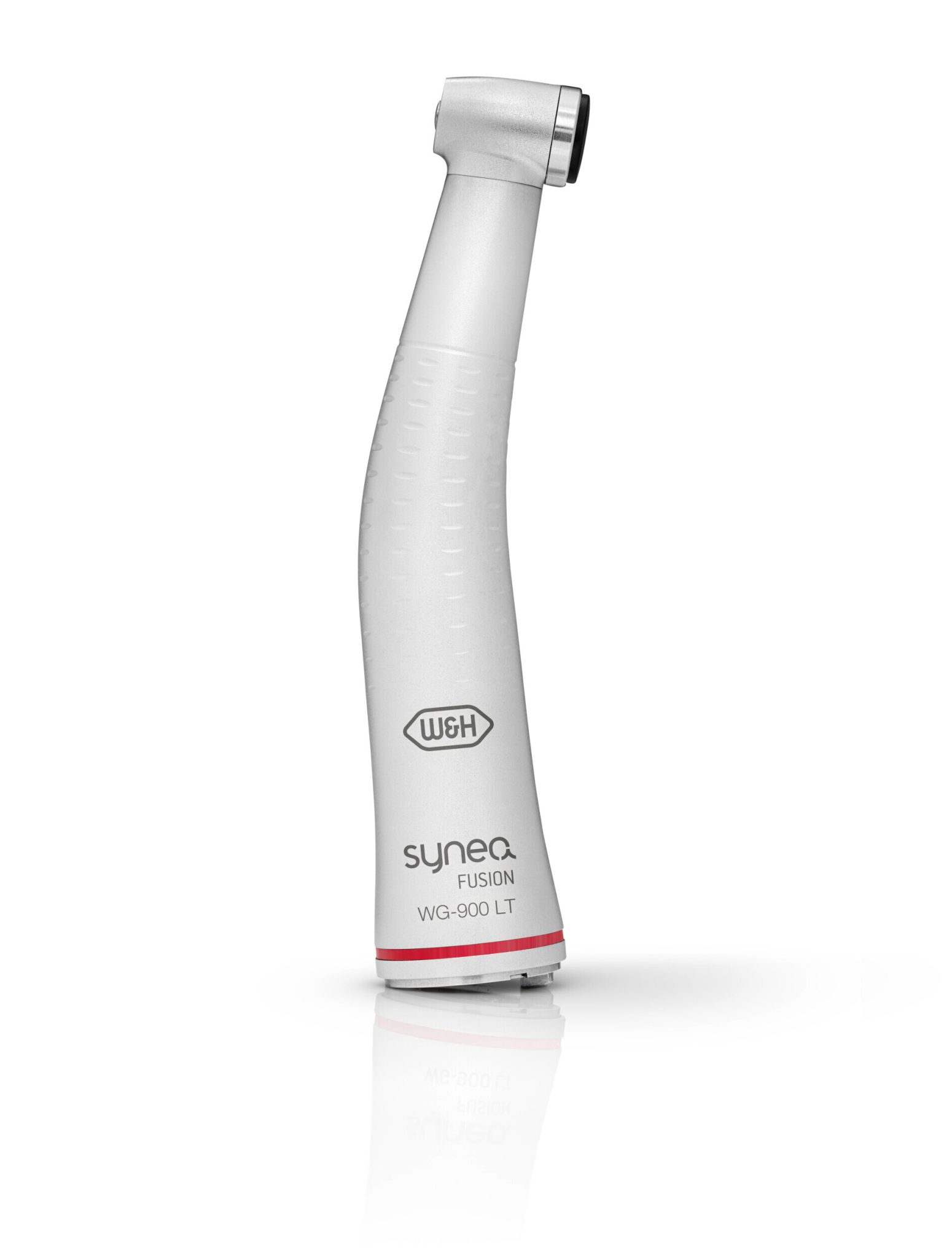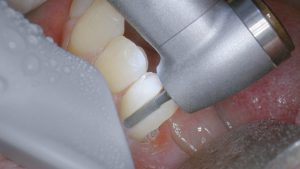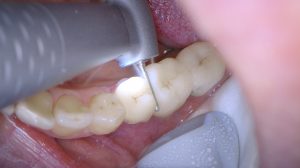Innovation and problem-solving
Featured Products Promotional FeaturesPosted by: Dental Design 16th April 2024

The concept of using rotary tools to cut hard materials, such as granite, is at least 6,000 years old. As early as 25,000BCE our ancestors were using handheld lithic borers to cut shells without breaking them. These tools were generally made of flint, and were pressed against the object to be perforated and then twisted back and forth at low speed and relatively high torque.[i] Powerful modern handpieces have elevated the principle of variable speed and high torque to enable precise cuts into much harder materials like zirconia. [ii]
Restorative material science is developing quickly, driving innovation in the development of tools. Durable materials like zirconia increasingly have the potential to emulate the aesthetic and function of real teeth. With these robust materials has come a need for advances in the technology around rotary cutting, as destructive disassembly remains the safest and least traumatic option for removing a failed crown.[iii]
The use of zirconia in restorative dentistry
 Zirconia, ZrO2 zirconium dioxide, has become a popular material in restorative dentistry for its biocompatibility, high fracture toughness and radiopacity.[iv] Dental zirconia is more often a modified yttria (Y2O3) tetragonal zirconia polycrystal (Y-TZP), because it has greater mechanical properties and better tear resistance than other ceramics.[v] Different formulas are currently in development to continue to improve on aesthetics as well as durability.[vi]
Zirconia, ZrO2 zirconium dioxide, has become a popular material in restorative dentistry for its biocompatibility, high fracture toughness and radiopacity.[iv] Dental zirconia is more often a modified yttria (Y2O3) tetragonal zirconia polycrystal (Y-TZP), because it has greater mechanical properties and better tear resistance than other ceramics.[v] Different formulas are currently in development to continue to improve on aesthetics as well as durability.[vi]
Despite the advantages of zirconia, restoration failure due to crown fracture remains a possibility.[vii] In a recent survey, the difficulty associated with its removal or replacement was reported by practitioners to be one of the main disadvantages of using zirconia as a prosthetic material.[viii]
Material science is a crucial aspect of drilling science, and different materials are described in terms of hardness using the Mohs Hardness Scale.[ix] Zirconia is 8.8; around the same hardness as tungsten carbide, which is a commonly used material in burs. Diamond is 10 on the Mohs Scale, and super coarse diamond burs have been found to be more effective at cutting zirconia than others,[x] although the greater force needed to cut zirconia still results in frequent bur wear. [xi]
Friction and heat
Balancing the relationship between torque and speed, while managing the effects of friction, is an enormous challenge when cutting very hard materials. Thermal damage to  patients is a greater risk when working intraorally, due to the very high temperatures generated in the process.[xii]
patients is a greater risk when working intraorally, due to the very high temperatures generated in the process.[xii]
The bur in a modern handpiece can rotate at speeds of 200,000–400,000 rpm, and the associated friction can heat the target material to 240°C before cooling.[xiii] In tests, an intrapulpal temperature increase of 5.5℃ for 10 seconds was shown to cause irreversible damage to pulp tissues.[xiv] To mitigate against thermal damage to patients, high-speed handpieces have incorporated a function to spray cooled water, usually so that water flows through the tool and is sprayed onto the surface through holes in the head during cutting.[xv]
The heat generated within the handpiece itself is higher when cutting hard material, this can cause the water to heat up, which can potentially hurt the patient and/or handpiece operator, so techniques to reduce overheating and improve cooling have had to be innovative. The faster the coolant flow rate, the more effectively it will maintain a lower temperature. The normal spray rate is 15ml/min. Increasing this to 25ml/min not only reduces the risk of thermal damage, it has also been shown to improve cutting performance and keep burs cleaner.[xvi]
Vibration and ergonomics
Vibration is another risk to be mitigated when cutting into high resistance materials. The use of dental handpieces exposes practitioners to hand-arm vibration (HAVS), which, despite being well under regulated levels, over time can contribute to permanent finger-symptoms.[xvii] Damage from HAVS can include the inability to do fine work and cold can trigger painful finger blanching attacks.[xviii] Handpieces with higher torque operate effectively at a lower speed, and have a lower vibration rate than low-torque handpieces.[xix]
The cutting edge
W&H has been a global leader in the development and manufacture of medical technology products since 1890. Their new Synea Power Edition has been specifically designed to manage the hardest new materials used in dentistry today including zirconia. Cutting efficiency is maximised by the optimum ratio of torque and speed, making it the optimal solution for advanced ceramic material like zirconia. Its superior cooling capabilities allow a flow rate of over 50ml/min – more than triple the normal spray rate – ensuring greater safety and improved durability.
Innovation in one area of technology often requires other technologies to advance rapidly to keep up. As long as material sciences continue to develop to deliver greater restoration robustness, innovation in handpieces designed to support new clinical needs will undoubtedly also grow.
To find out more visit www.wh.com/en_uk, call 01727 874990 or email
[i] Gwinnett, A. John and Gorelick, Leonard (1998). A Brief History of Drills and Drilling. BEADS: Journal of the Society of Bead Researchers 10: 49-56. Available at: https://surface.syr.edu/beads/vol10/iss1/8
[ii] Alexander, S.A. (2016). Diamond bur cutting efficiency of dental zirconia. Thesis. Available at: https://researchrepository.wvu.edu (Accessed: July 2023).
[iii] Sharma A, Rahul GR, Poduval ST, Shetty K. Removal of failed crown and bridge. J Clin Exp Dent. 2012 Jul 1;4(3):e167-72. doi: 10.4317/jced.50690. PMID: 24558549; PMCID: PMC3917642.
[iv] Bona AD, Pecho OE, Alessandretti R. Zirconia as a Dental Biomaterial. Materials (Basel). 2015 Aug 4;8(8):4978-4991. doi: 10.3390/ma8084978. PMID: 28793485; PMCID: PMC5455532.
[v] Nistor L, Grădinaru M, Rîcă R, Mărășescu P, Stan M, Manolea H, Ionescu A, Moraru I. Zirconia Use in Dentistry – Manufacturing and Properties. Curr Health Sci J. 2019 Jan-Mar;45(1):28-35. doi: 10.12865/CHSJ.45.01.03. Epub 2019 Mar 31. PMID: 31297259; PMCID: PMC6592671.
[vi] Alqutaibi AY, Ghulam O, Krsoum M, Binmahmoud S, Taher H, Elmalky W, Zafar MS. Revolution of Current Dental Zirconia: A Comprehensive Review. Molecules. 2022 Mar 4;27(5):1699. doi: 10.3390/molecules27051699. PMID: 35268800; PMCID: PMC8911694.
[vii] Alexander, S.A. (2016). Diamond bur cutting efficiency of dental zirconia. Thesis. Available at: https://researchrepository.wvu.edu (Accessed: July 2023).
[viii] Lawson NC, Frazier K, Bedran-Russo AK, Park J, Urquhart O. Zirconia Restorations. Journal of the American Dental Association DOI: https://doi.org/10.1016/j.adaj.2020.10.012. Volume 152, Issue 1, P80-81. E2 January 2021
[ix] Woodford, C. Explain That Stuff. Drilling science and technology. Available at:https://www.explainthatstuff.com/drilling.html#:~:text=An%20electric%20drill%20converts%20electricity,is%20converted%20into%20heat%20energy. December 2022. Accessed February 2024
[x] Nakamura, K., Katsuda, Y., Ankyu, S., Harada, A., Tenkumo, T., Kanno, T., Niwano, Y., Egusa, H., Milleding, P. and Örtengren U. (2015). Cutting efficiency of diamond burs operated with electric high-speed dental handpiece on zirconia. European Journal of Oral Sciences, 123(5), pp.375–380. doi:https://doi.org/10.1111/eos.12211.
[xi] Nakamura, K., Katsuda, Y., Ankyu, S., Harada, A., Tenkumo, T., Kanno, T., Niwano, Y., Egusa, H., Milleding, P. and Örtengren U. (2015). Cutting efficiency of diamond burs operated with electric high-speed dental handpiece on zirconia. European Journal of Oral Sciences, 123(5), pp.375–380. doi:https://doi.org/10.1111/eos.12211.
[xii] Cavalcanti, B.N., Otani, C. and Rode, S.M. (2002). High-speed cavity preparation techniques with different water flows. Journal of Prosthetic Dentistry, 87(2), pp.158–161. doi:https://doi.org/10.1067/mpr.2002.120655.
[xiii] Farah RI. Effect of cooling water temperature on the temperature changes in pulp chamber and at handpiece head during high-speed tooth preparation. Restor Dent Endod. 2018 Dec 24;44(1):e3. doi: 10.5395/rde.2019.44.e3. PMID: 30834225; PMCID: PMC6387888.
[xiv] Kwon SJ, Park YJ, Jun SH, Ahn JS, Lee IB, Cho BH, Son HH, Seo DG. Thermal irritation of teeth during dental treatment procedures. Restor Dent Endod. 2013 Aug;38(3):105-12. doi: 10.5395/rde.2013.38.3.105. Epub 2013 Aug 23. PMID: 24010075; PMCID: PMC3761117.
[xv] Bhandary N, Desai A, Shetty YB. High speed handpieces. J Int Oral Health. 2014 Feb;6(1):130-2. Epub 2014 Feb 26. PMID: 24653618; PMCID: PMC3959152.
[xvi] Alexander, S.A. (2016). Diamond bur cutting efficiency of dental zirconia. Thesis. Available at: https://researchrepository.wvu.edu (Accessed: July 2023).
[xvii] Rytkönen E, Sorainen E, Leino-Arjas P, Solovieva S. Hand-arm vibration exposure of dentists. Int Arch Occup Environ Health. 2006 Jun;79(6):521-7. doi: 10.1007/s00420-005-0079-y. Epub 2006 Jan 18. PMID: 16421714.
[xviii] Health and Safety Executive. Hand arm vibration at work. Available at: https://hse.gov.uk/vibration/hav/index.htm. Accessed February 2024.
[xix] Hetou S, 2018. Comparison of cutting efficiency of different rotary instruments, on two different ceramic materials using electric and air-turbine dental hand-pieces. Master’s thesis. Nova Southeastern University. Retrieved from NSUWorks, College of Dental Medicine. (125) https://nsuworks.nova.edu/hpd_cdm_stuetd/125.











